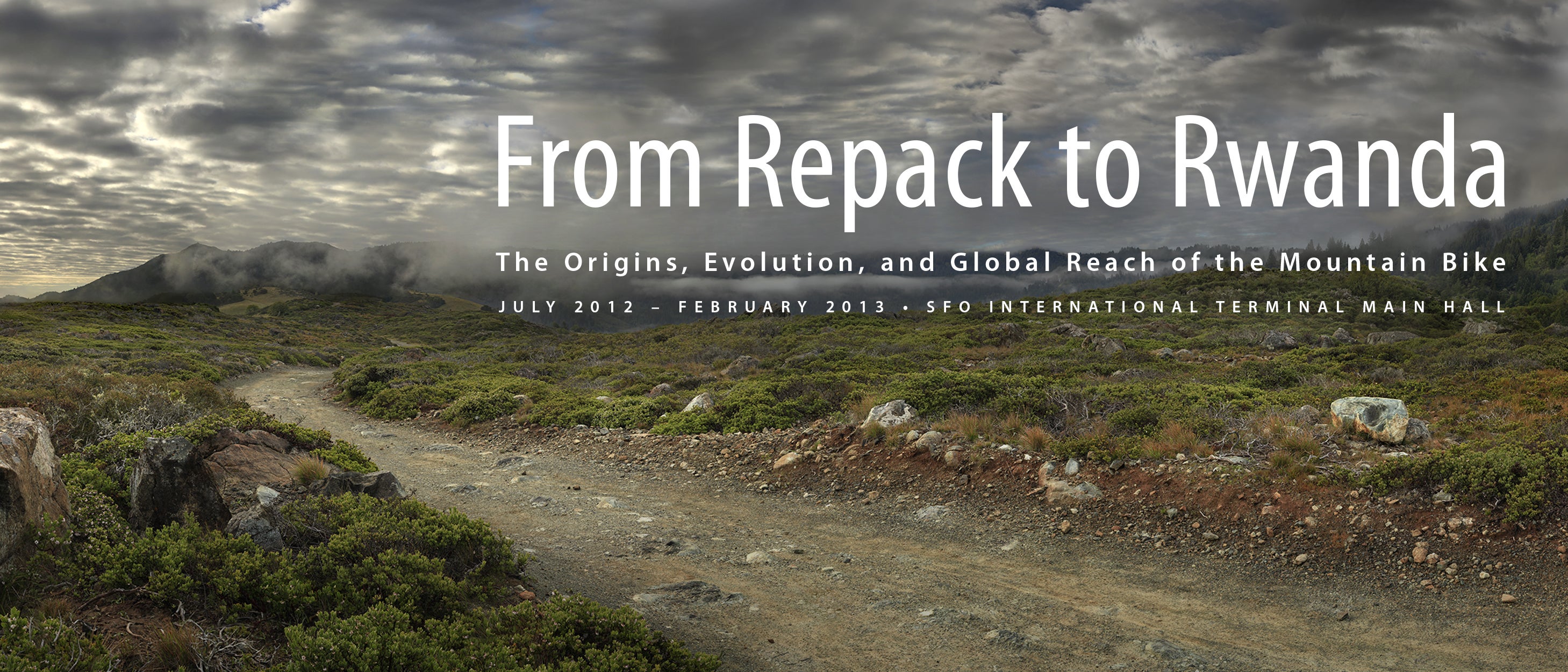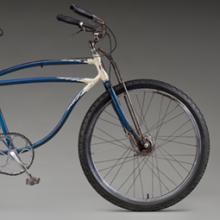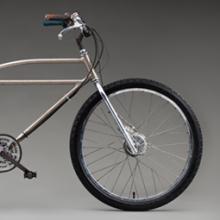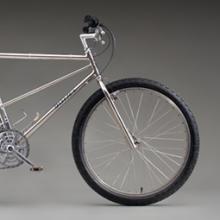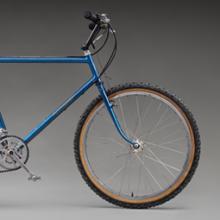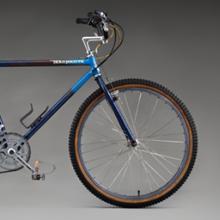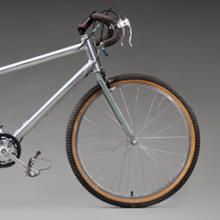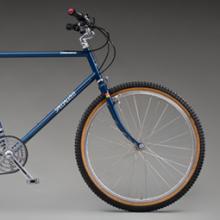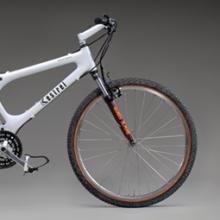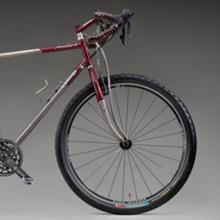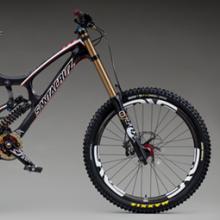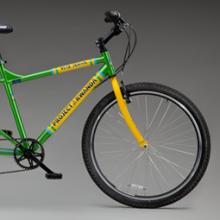From Repack to Rwanda: The Origins, Evolution, and Global Reach of the Mountain Bike
“This sure is a lot of fun, but who else would want to do it.”
—Joe Breeze to Otis Guy on Mount Tamalpais
Marin County, California c. 1975
From Repack to Rwanda
The Origins, Evolution, and Global Reach of the Mountain Bike
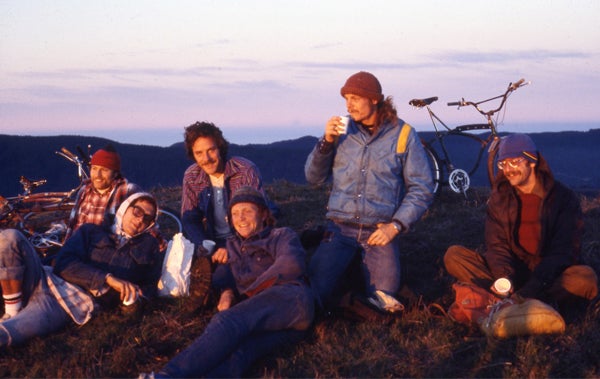 No one could have guessed what was set in motion when Joe Breeze and Otis Guy, two young road racers from Northern California's Marin County, began riding stripped-down, single-speed Schwinn bikes on Mount Tamalpais in 1973. They had selected these bikes, often called clunkers, for the sturdy frames and "balloon" tires that allowed rugged, off-road travel. Off-road bicycling was pioneered in several California locations, and elsewhere. U. C. Davis professor John Finley Scott produced his "woodsie" bike with knobby tires and multiple gears in 1953. Santa Barbara riders and Cupertino's Morrow Dirt Club members experimented with off-road bikes in the 1970s. But Marin's clunker enthusiasts created a galvanizing event that rapidly propelled mountain bike development in Northern California and helped spread its popularity far beyond the borders of the Golden State.
No one could have guessed what was set in motion when Joe Breeze and Otis Guy, two young road racers from Northern California's Marin County, began riding stripped-down, single-speed Schwinn bikes on Mount Tamalpais in 1973. They had selected these bikes, often called clunkers, for the sturdy frames and "balloon" tires that allowed rugged, off-road travel. Off-road bicycling was pioneered in several California locations, and elsewhere. U. C. Davis professor John Finley Scott produced his "woodsie" bike with knobby tires and multiple gears in 1953. Santa Barbara riders and Cupertino's Morrow Dirt Club members experimented with off-road bikes in the 1970s. But Marin's clunker enthusiasts created a galvanizing event that rapidly propelled mountain bike development in Northern California and helped spread its popularity far beyond the borders of the Golden State.
The event was Repack, a time-trial race held on a remote Marin fire road. The race derived its name from the need to repack the bikes' coaster brakes after the grease vaporized during rapid descent. From 1976 to 1979, a series of twenty-two Repack races served as the ultimate proving ground for a tight-knit group of friendly but competitive rivals determined to prove who was fastest down the hill. More importantly, the race served as the testing ground for a series of modifications and innovations crucial to the early development and evolution of the mountain bike. Repack inspired Breeze's production of the first modern mountain bike in 1977 in nearby Mill Valley and a variety of models by other designer-frame builders working in Northern California in the late 1970s and early 1980s.
Northern California's impact on the mountain bike continued in the ensuing decades with designers and builders exploring new materials, altering frame geometry, and developing one innovative component after another. Engineers from the area's military aerospace industries worked side by side with local bike designers to introduce the molded, all-carbon frames that are now prevalent. Bay Area motorcycle racers used their knowledge of suspension principles to produce the prototypes for today's full-suspension mountain bikes. Frame builders working in the North Bay charted the course for the eventual acceptance of larger 29-inch wheels. And a pair of brothers who graduated from Santa Clara University took suspension designs to new heights with shocks now found on top-performing bikes worldwide.
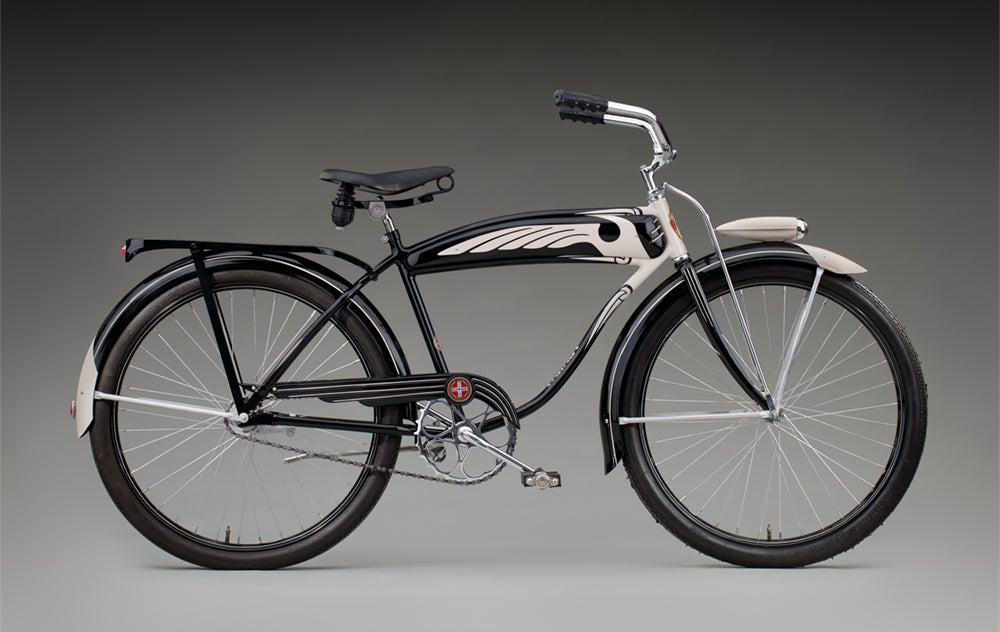 From its humble origins as a modified, single-speed bike raced downhill on the trails of Marin County in the early 1970s, to today's sophisticated machine used for recreation, commuting, and international competitions, the mountain bike has achieved global popularity. It is ridden everywhere, including some of the world's most remote locations from the Himalayas to Timbuktu. In Ghana, a Santa Cruz-based designer's frames are assembled from the local and renewable resources of bamboo and hemp. In Rwanda, one of the industry's founders from Palo Alto is helping transform that nation's economy through a series of bicycle-related initiatives. Northern California's contributions to the mountain bike are widespread and deeply felt. Despite the insistence of many early clunker riders that they "weren't out to change the world," the bicycles they created and the industry they pioneered certainly have.
From its humble origins as a modified, single-speed bike raced downhill on the trails of Marin County in the early 1970s, to today's sophisticated machine used for recreation, commuting, and international competitions, the mountain bike has achieved global popularity. It is ridden everywhere, including some of the world's most remote locations from the Himalayas to Timbuktu. In Ghana, a Santa Cruz-based designer's frames are assembled from the local and renewable resources of bamboo and hemp. In Rwanda, one of the industry's founders from Palo Alto is helping transform that nation's economy through a series of bicycle-related initiatives. Northern California's contributions to the mountain bike are widespread and deeply felt. Despite the insistence of many early clunker riders that they "weren't out to change the world," the bicycles they created and the industry they pioneered certainly have.
Special thanks to those who made this history and who participated through the generous loan of their material and expertise, especially to guest curator Joe Breeze who guided this exhibition throughout its development.
[top inset image]
Joe Breeze, Vince Carlton, Fred Wolf, Gary Fisher, Charlie Kelly, and Eric Fletcher at the top of Mt. Barnaby for coffee, donuts, and the sunrise, West Marin County, California November, 1977
Photo by Wende Cragg (b. 1948)
Wende Cragg/Rolling Dinosaur Archives
Courtesy of Joe Breeze
R20212.0601.016.03
[bottom inset image]
Schwinn Admiral DX c. 1941
Arnold, Schwinn, & Co. (est. 1895), Chicago
restored by Bob Ujszaszi of Redondo Beach, California
seamless mild-steel
overall bike weight: 52 lbs
Owned by Rudy Contratti of Fairfax, California
L20212.0602.001
©2012 by the San Francisco Airport Commission. All rights reserved.
